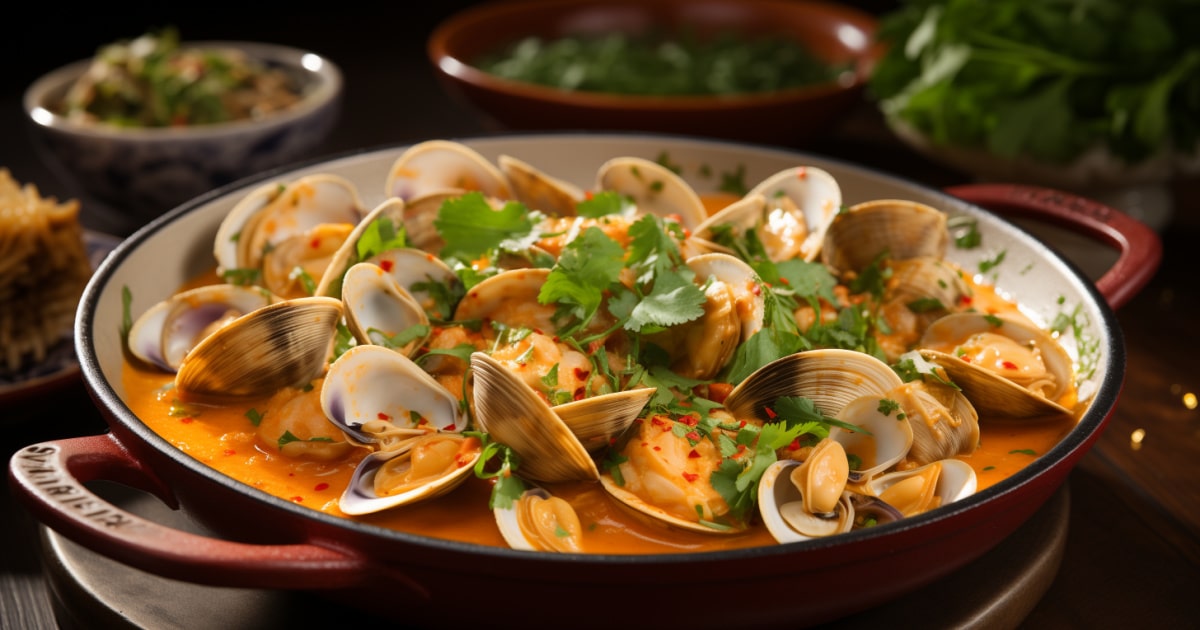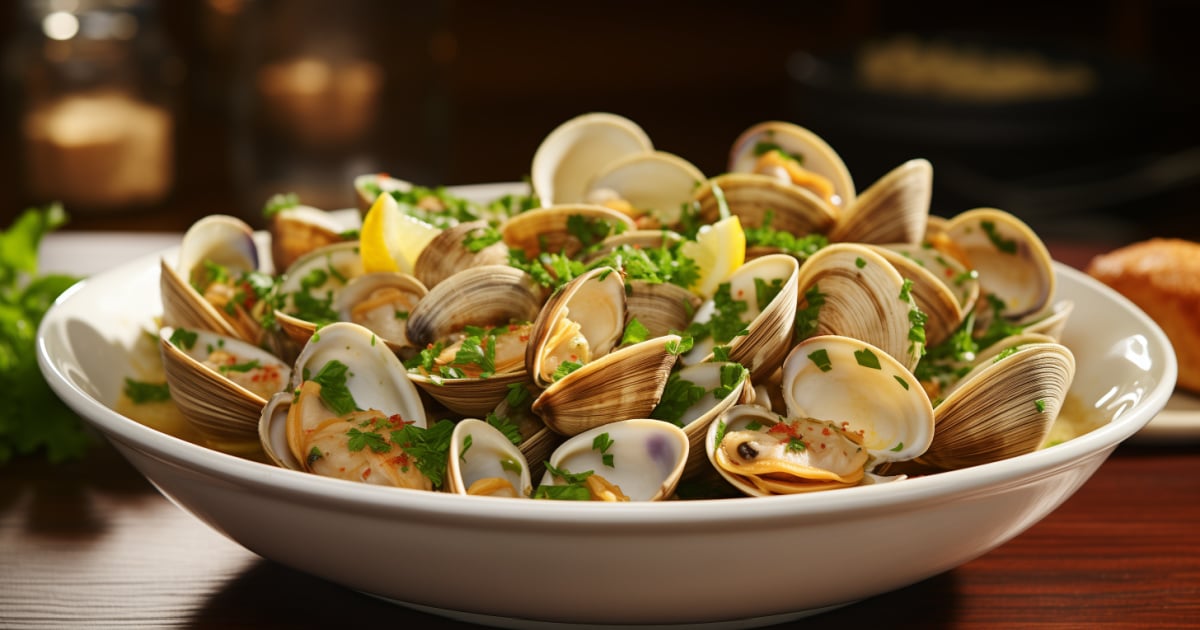The Delightful World of Little Neck Clams
Have you ever tasted little neck clams? These small, flavorful gems from the sea are a favorite among seafood enthusiasts. Known for their sweet taste and tender texture, little neck clams are incredibly versatile in the kitchen. Whether you’re enjoying them in a savory clam chowder, steamed with herbs, or simply raw on the half shell, they bring a fresh ocean flavor to any dish.
In this article, we’re going to explore everything about little neck clams. What makes them different from other clams, where they’re found, and why they’re so cherished in culinary circles. If you’re curious about adding little neck clams to your cooking repertoire or just want to know more about these delicious clams, you’re in the right place. Let’s dive into the world of little neck clams and discover how they can transform your meals.
ONLINE SHIPPING
We’re excited to announce that we will soon be offering online shipping for our premium Maryland Blue Crabs! This new service will allow you to enjoy the fresh, succulent taste of our crabs from the comfort of your own home, no matter where you are. To make sure you’re among the first to experience this convenience, we invite you to visit our website and sign up for our notification email. By doing so, you’ll be promptly informed as soon as our shipping service goes live. Don’t miss out on this opportunity to have the finest Maryland Blue Crabs delivered straight to your doorstep. Click the button to visit the store to sign-up! 🦀📦🌍
Defining Little Neck Clams
Little neck clams, a prized catch from the family of hard clams (Mercenaria mercenaria), are more than just a seafood delicacy; they represent a spectrum of sizes in the clam world. Among the various size classifications—little necks, top necks, cherrystones, and quahogs—little necks are the smallest and most tender, making them highly sought after for both raw and cooked preparations.
Originating from the sandy bottoms of the East Coast, particularly from the clean, cold waters from Maine down to Virginia, little neck clams thrive in intertidal zones where they can be harvested sustainably. Their size, typically not exceeding two inches in diameter, contributes to their tender texture and sweet flavor, distinguishing them from their larger counterparts.
The size variation within the hard clam family is significant because it affects not just the clam’s culinary use but also its texture and flavor profile. Little necks, being the smallest, are often considered the most premium variety, perfect for elegant dishes where the quality of the ingredient takes center stage. Whether served raw on the half shell with a simple mignonette sauce or steamed with garlic and white wine, little neck clams offer a delicate taste of the sea that’s unmatched by larger varieties.
Understanding the family and size variations of little neck clams is key to appreciating their value in the culinary world. Their versatility and exquisite flavor make them a favorite ingredient for chefs and home cooks alike, eager to bring the essence of the ocean to their dishes.
The Culinary Appeal of Little Neck Clams
Little neck clams are celebrated in kitchens worldwide for their exceptional culinary versatility and distinct flavor. Their small size and tender meat make them a preferred choice for a variety of dishes, showcasing their ability to adapt and enhance flavors, whether in sophisticated fine dining or casual, comforting home meals.
Versatility in the Kitchen: Little neck clams shine in an array of culinary applications. Their delicate texture is perfect for raw preparations, such as on the half shell or in ceviches, where their natural sweetness can be fully appreciated. However, their robust enough flavor to stand up to cooking makes them ideal for steaming, grilling, or incorporating into pasta sauces and chowders. This versatility allows chefs and home cooks to experiment with little neck clams in diverse recipes, from traditional Italian linguine alle vongole to a simple, yet flavorful, clam boil.
A Staple in Seafood Cuisine: Little neck clams hold a special place in seafood cuisine, particularly in dishes that require high-quality, flavorful clams. In New England, for example, they’re a key ingredient in authentic clam chowder, adding depth and richness to the beloved soup. Similarly, their size and taste make them a top choice for clams casino, a classic appetizer where they’re broiled with a breadcrumb and bacon topping, highlighting their natural flavors.
Economic and Flavorful Option: While little neck clams are prized for their quality, they also offer a cost-effective way to incorporate seafood into your diet. Compared to larger clams or other shellfish, little necks provide a balance of affordability and flavor, making them accessible for regular use in a variety of dishes.
The culinary appeal of little neck clams lies in their ability to elevate any dish with their sweet, tender meat. Whether you’re a seasoned chef looking to impress with intricate seafood creations or a home cook aiming to add a touch of elegance to weeknight dinners, little neck clams offer endless possibilities for culinary exploration and enjoyment.
Harvesting and Sustainability of Little Neck Clams
The journey of little neck clams from their natural habitats to dining tables is a testament to the careful balance between enjoying nature’s bounty and preserving it for future generations. Understanding the harvesting practices and sustainability efforts for little neck clams is crucial for both consumers and culinary professionals who value ethical and environmentally responsible seafood sourcing.
Harvesting Practices: Little neck clams are typically harvested from the sandy bottoms of coastal waters, where they burrow and filter feed. Harvesters, often called clam diggers, use various methods to collect these clams, including hand rakes and mechanical dredges. The method of harvesting can depend on the region, the size of the clam beds, and local regulations designed to protect marine ecosystems. In many areas, clamming is regulated to ensure that only clams of a certain size are collected, allowing younger, smaller clams to mature and sustain the population.
Sustainability Efforts: Sustainability is a key concern in the harvesting of little neck clams. Many coastal communities and regulatory bodies have implemented measures to ensure that clam populations remain healthy and viable. These measures can include limiting the number of clams harvested per day, establishing open and closed seasons to protect breeding clams, and monitoring water quality to prevent pollution that could harm clam beds. Aquaculture, or clam farming, has also become an increasingly popular method for producing little neck clams. This controlled environment allows for more sustainable growth and harvesting practices, reducing the impact on wild clam populations and helping to meet the demand for these delicious shellfish.
Consumer Responsibility: As consumers, choosing sustainably sourced little neck clams is one way to support the health of marine ecosystems. Look for clams that are certified by reputable seafood sustainability organizations or sourced from known, responsible aquaculture operations. By making informed choices, consumers can enjoy little neck clams while contributing to the preservation of marine environments.
The harvesting and sustainability of little neck clams reflect a commitment to responsible seafood consumption. By understanding and supporting sustainable practices, we can ensure that little neck clams remain a cherished part of culinary traditions for years to come, offering a delicious link between the sea and our tables.

Selecting and Preparing Little Neck Clams
Choosing the freshest little neck clams and preparing them properly are key steps to fully enjoying their delicate flavor and tender texture. Whether you’re an experienced chef or a home cook eager to explore seafood cuisine, these tips on selecting and preparing little neck clams will ensure your dishes are both delicious and safe to eat.
Selecting the Best Little Neck Clams:
- Look for Freshness: Fresh little neck clams should have a clean, ocean-like smell. Avoid any clams that have a strong, fishy odor, as this can indicate spoilage.
- Check the Shell: The shells of little neck clams should be tightly closed or should close when lightly tapped. This is a sign that the clam is alive and fresh. Avoid clams with cracked or open shells, as they may be dead and unsafe to eat.
- Source Responsibly: Whenever possible, choose little neck clams that have been harvested sustainably. Look for clams from suppliers who follow responsible fishing practices or opt for clams certified by reputable seafood sustainability organizations.
Preparing Little Neck Clams for Cooking:
- Cleaning: Before cooking, rinse little neck clams under cold running water to remove any sand or debris from their shells. Some cooks also recommend soaking the clams in a mixture of saltwater and cornmeal to encourage them to expel any internal sand.
- Inspection: As you clean the clams, inspect them once more to ensure that all are alive and suitable for cooking. Discard any clams that remain open after tapping or that have damaged shells.
- Cooking: Little neck clams can be cooked in a variety of ways, including steaming, boiling, grilling, or baking. They are done when their shells open, revealing the cooked clam inside. Be careful not to overcook them, as this can result in a tough texture.
By carefully selecting and preparing little neck clams, you can enhance the natural flavors and ensure a successful seafood dish. Whether served as the star of a clam bake, added to a savory pasta, or enjoyed on their own with a simple dipping sauce, little neck clams bring a taste of the sea to any meal, making them a versatile and cherished ingredient in kitchens around the world.
Cooking with Little Neck Clams: Tips and Recipes
Little neck clams are a versatile ingredient that can elevate a variety of dishes with their sweet, oceanic flavor. Cooking with these clams, however, requires some know-how to ensure they are showcased at their best. Here are essential tips for cooking with little neck clams, followed by a couple of simple yet delicious recipes to get you started.
Essential Cooking Tips:
- Don’t Overcook: Little neck clams cook quickly, and overcooking can lead to a rubbery texture. They’re ready as soon as their shells pop open, usually within minutes when steamed or boiled.
- Use the Right Heat: For dishes where clams are cooked directly in sauce or broth, use a gentle simmer to gradually coax them open without toughening the meat.
- Save the Liquor: The natural juice, or “liquor,” that clams release during cooking is packed with flavor. Strain and reserve it to add depth to sauces, soups, and chowders.
- Complementary Flavors: Little neck clams pair well with a variety of ingredients. Garlic, white wine, butter, and fresh herbs like parsley or thyme enhance their natural sweetness without overwhelming it.
Simple Steamed Little Neck Clams Recipe:
Ingredients:
- 2 lbs little neck clams, cleaned
- 1 cup dry white wine
- 2 garlic cloves, minced
- 2 tablespoons unsalted butter
- Fresh parsley, chopped for garnish
- Lemon wedges, for serving
Instructions:
- In a large pot, combine the white wine and garlic. Bring to a simmer over medium heat.
- Add the little neck clams and cover the pot. Steam for 5-7 minutes, or until the clam shells have opened.
- Remove from heat. Discard any clams that haven’t opened.
- Stir in the butter until melted. Garnish with fresh parsley.
- Serve immediately with lemon wedges and crusty bread to soak up the broth.
Clam Linguine:
Ingredients:
- 1 lb linguine
- 2 lbs little neck clams, cleaned
- ¼ cup olive oil
- 4 garlic cloves, minced
- 1 teaspoon red pepper flakes (optional)
- 1 cup dry white wine
- Fresh parsley, chopped for garnish
- Salt and pepper, to taste
Instructions:
- Cook linguine according to package instructions. Drain and set aside.
- In a large skillet, heat olive oil over medium heat. Add garlic and red pepper flakes, sautéing until fragrant.
- Add the clams and white wine. Cover and cook until the clams open, about 5-7 minutes.
- Toss the cooked linguine with the clam mixture. Season with salt and pepper.
- Garnish with fresh parsley and serve immediately.
These recipes showcase the delicate flavor of little neck clams in dishes that are both easy to prepare and sure to impress. Whether you’re new to cooking with seafood or a seasoned pro, little neck clams offer a world of culinary possibilities waiting to be explored.
Incorporating Little Neck Clams into Your Culinary Adventures
Little neck clams, with their sweet flavor and tender texture, are a culinary delight that can transform an ordinary meal into an extraordinary dining experience. As we’ve explored what little neck clams are, their culinary appeal, and how to select, prepare, and cook them, it’s clear that these small but mighty shellfish are versatile stars of the seafood world.
Whether you’re preparing a simple steamed dish to savor the pure taste of the sea or incorporating them into more complex recipes like pasta or chowders, little neck clams bring a touch of elegance and a burst of flavor to your table. The key to their success in your kitchen lies in understanding their characteristics, respecting their freshness, and applying the cooking tips that allow their natural sweetness to shine through.
As you embark on your culinary adventures with little neck clams, remember that the journey is as rewarding as the destination. Experimenting with different flavors and techniques will not only enhance your cooking repertoire but also deepen your appreciation for the bounty of the ocean. Little neck clams are more than just an ingredient; they’re a gateway to exploring the rich tapestry of seafood cuisine.
We encourage you to dive into the world of little neck clams, to experiment with confidence, and to share the joy of cooking with those around you. Whether you’re a seasoned chef or a curious food enthusiast, little neck clams offer endless possibilities for creativity and enjoyment. So, grab your pot, set the table, and get ready to delight in the simple pleasure of cooking with little neck clams.
Explore More From T.L. Morris Seafood
If you enjoyed this post, you’re in for a treat! Dive deeper into seafood with some of my other articles that readers have loved:
- Your Search for “Steamed Blue Crabs Near Me” Ends Here– Find ‘steamed blue crabs near me’ at T.L. Morris Seafood or get them shipped via CrabsToYou.com for an authentic Maryland crab experience!
- Whats The Difference Between Jumbo Lump & Backfin Crab Meat?– Backfin Crab Meat Is Generally Most Popular We see this question come up quite often. Both Backfin Crab Meat and Jumbo Lump are quite different.
- Chesapeake Charm: The Story of Maryland Crabs and Their Cultural Legacy– Unveil the captivating world of Maryland crabs: a journey through the vibrant culinary legacy and deep-rooted traditions of the Chesapeake Bay.
Stay connected and keep exploring! Don’t forget to subscribe for the latest updates and insights.


